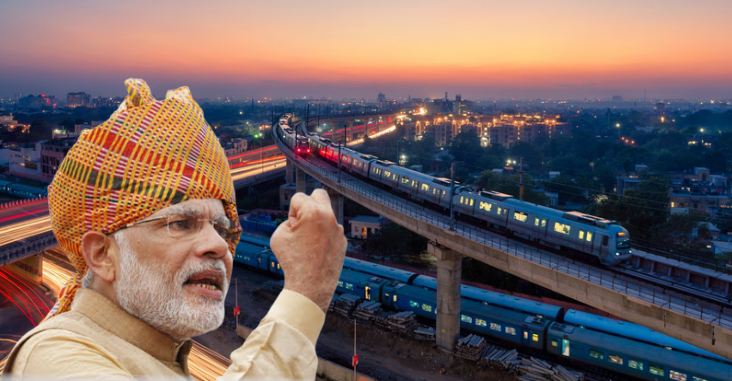In the last few months, the rating agencies around the world, as well as other forecasting institutions, have raised India’s economic growth target for the year 2022. Moody’s, one of three big rating agencies, has raised the forecast for India’s GDP growth for the current calendar year to 9.5 per cent from 7 per cent, citing a stronger-than-expected economic recovery from the national lockdown of 2020 and the second wave of the COVID-19 pandemic in mid-2021.
The Indian economy has witnessed a broad-based recovery in the last few months. After the Covid restrictions were lifted, the markets and roads across the country are buzzing once again and consumption, as well as demand, has picked up.
“Sales tax collection, retail activity and PMIs (Purchasing Managers Indices) suggest solid momentum. However, high oil prices and supply distortions remain a drag on growth,” Moody’s said on February 23 in an update to its Global Macro Outlook 2022-23 report.
“As is the case in many other countries, the recovery is lagging in contact-intensive services sectors, but it should pick up as the Omicron wave subsides. With most remaining restrictions now being lifted with the improvement in the COVID situation, including the reopening of schools and colleges for in-person instruction across various states, the country is on its way to normalcy,” Moody’s added.
Before Moody’s, agencies like IMF, World Bank, other rating agencies such as Fitch, have also revised India’s economic growth upward and showed the country as the fastest-growing major economy in the world for the next few years.
Previously, Manufacturing PMI touched 10 months high at 57.6, which means the government’s effort to Make in India and the Production Linked Incentive scheme have started showing positive results. A 10-month high manufacturing PMI means India is attracting a lot of factories that are exiting China and looking to rejig their supply chain.
The merchandise exports of the country rose by 26.5 per cent to 29.88 billion dollars while imports were 53.15 billion dollars, posting huge growth of around 57 per cent. Higher growth in imports and a lower jump in exports means that the Indian economy is firing on all cylinders, and the macroeconomic policies of the government are working.
Except for government consumption, where the lower spending by the states has kept the growth slow, all other segments such as private consumption, public investment, private investment, and exports are growing at a double-digit pace.
Schemes such as PLI are helping India topple China and emerge as the world’s leading production powerhouse. In its report, the World Bank said that “growth in emerging market and developing economies (EMDEs) is forecast to moderate to 4.6 percent in 2022, as macroeconomic policy support continues to be withdrawn and the rebound in China eases.”
The efforts of the Modi government in the last one and a half years to improve the macroeconomic conditions and maximize the opportunity for reform have worked well and are showing results now.
The healthy economic growth in the post-pandemic period vindicates the Modi government’s philosophy of Aatmanirbhar Bharat and now the government will stick to the same set of principles (investment-driven export-led growth) for the next few years.
